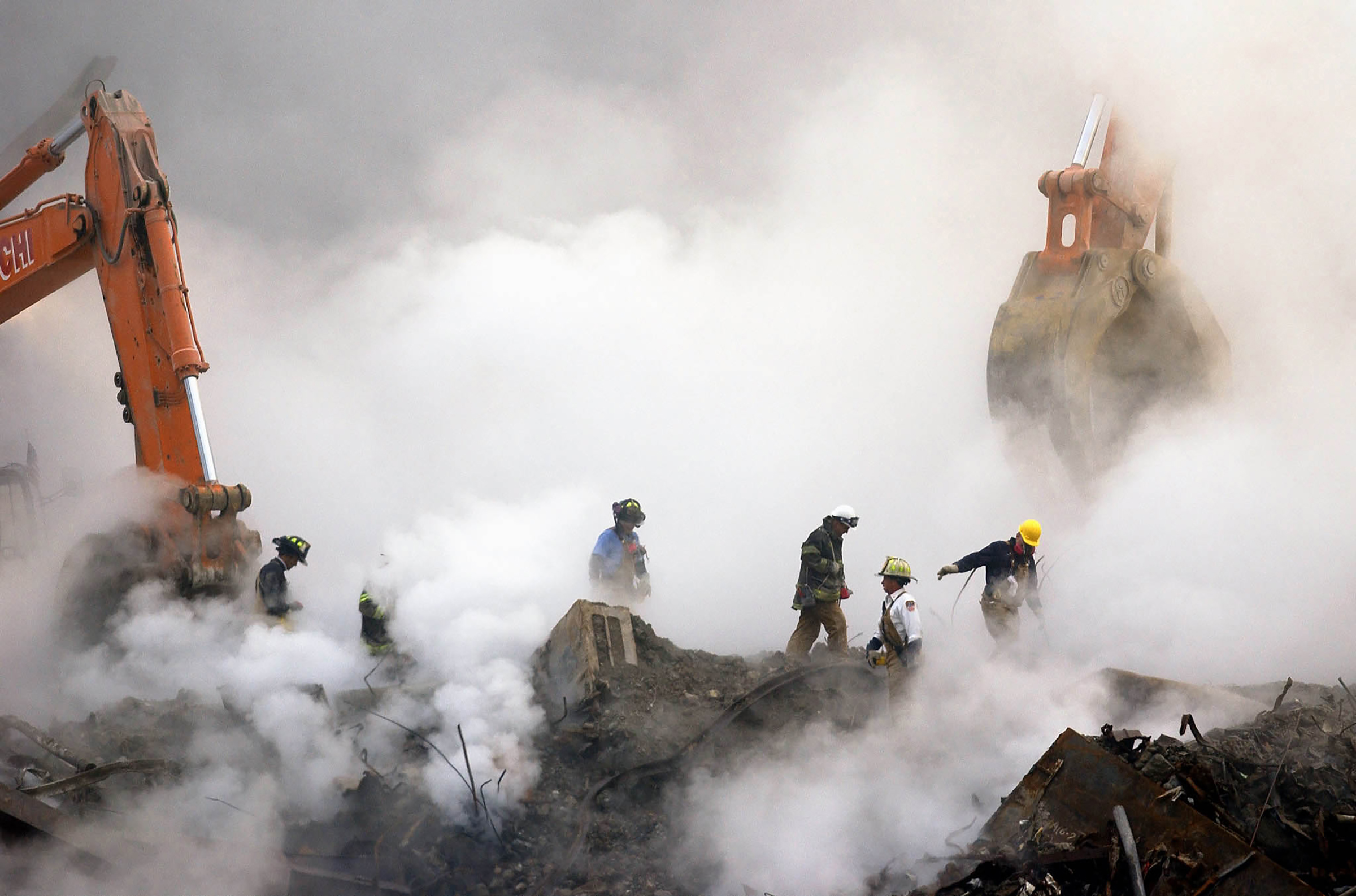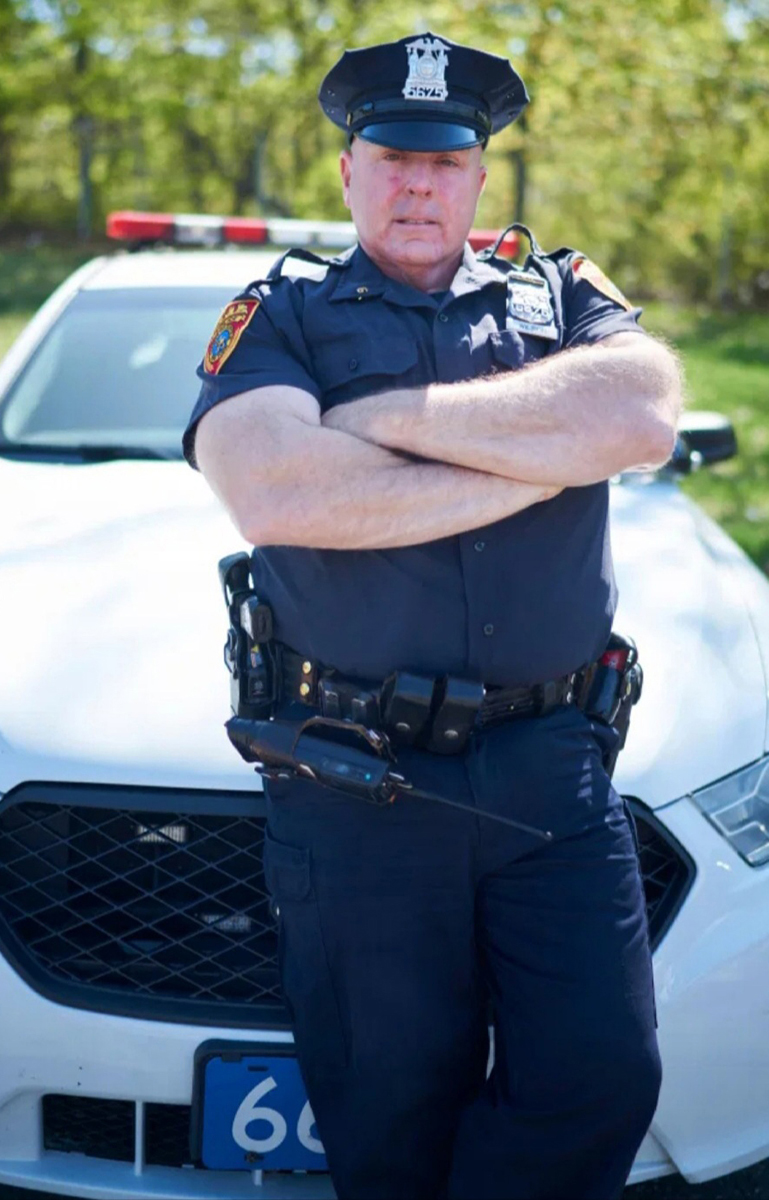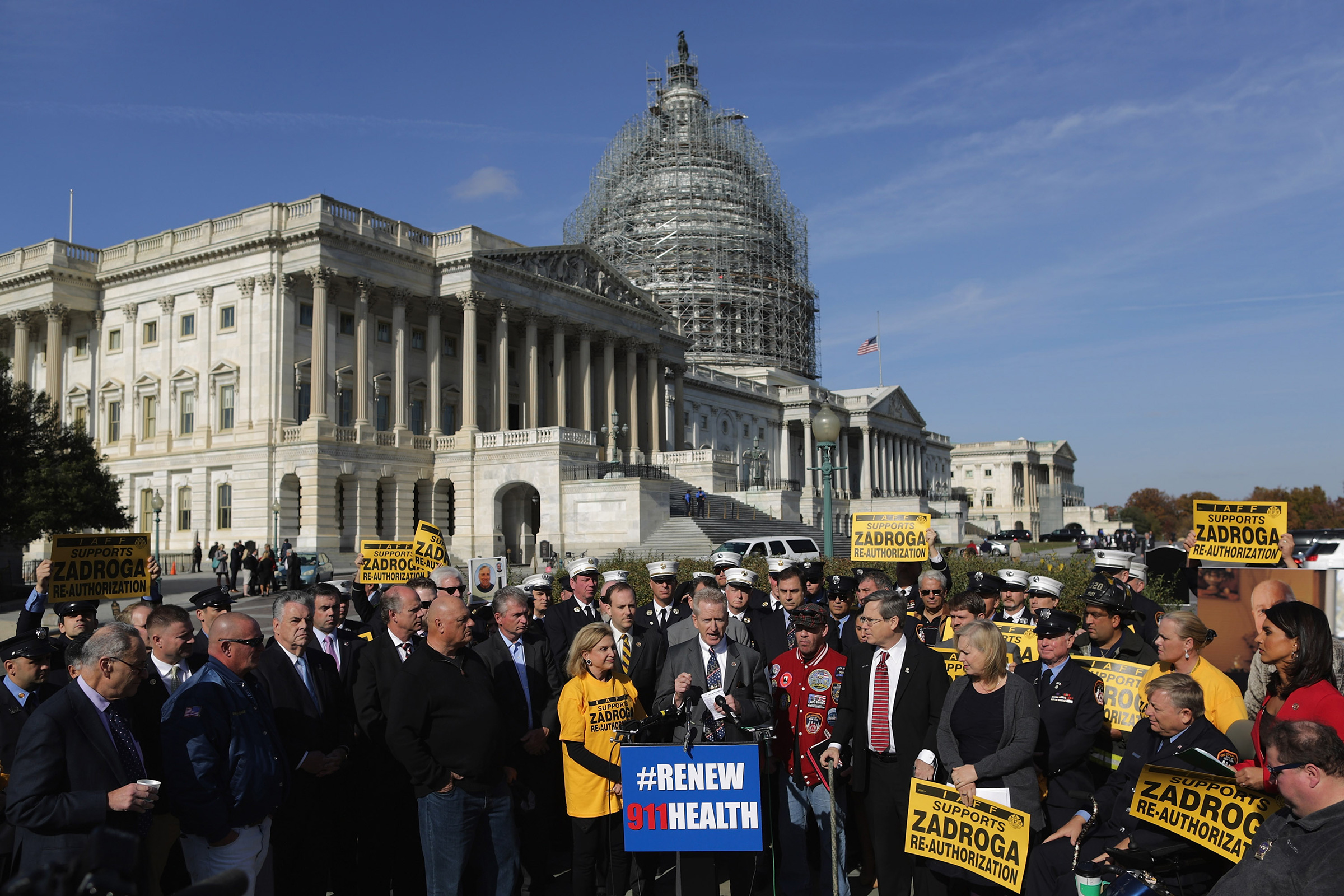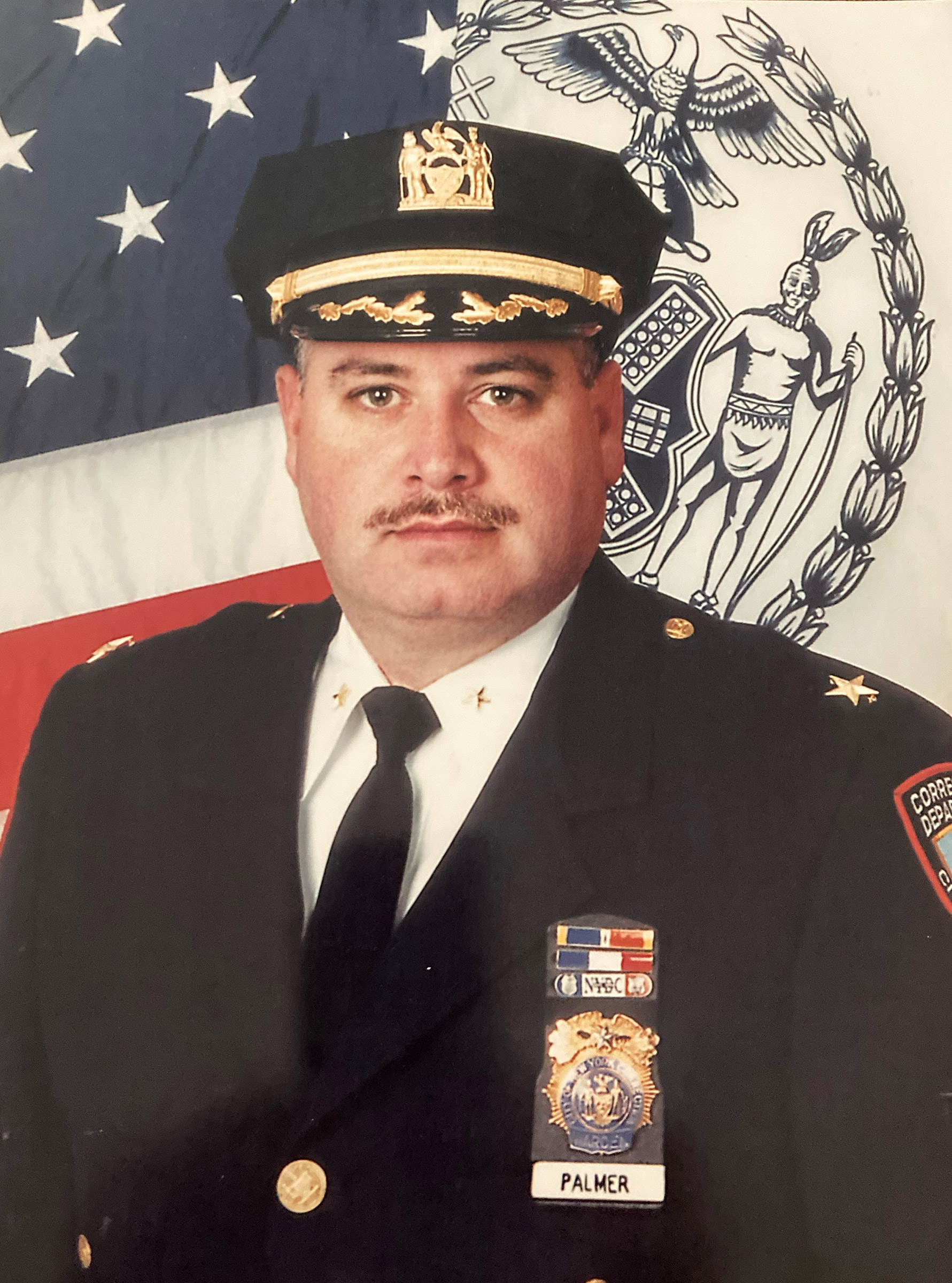Dr. David Prezant was knocked fully airborne at 9:59 on the morning of Sept. 11, 2001. He didn’t see the impact coming, but he felt it when it hit—and it nearly killed him.
Little more than an hour earlier, Prezant, then the deputy chief medical officer of the Fire Department of New York, was headed for his usual workplace at the FDNY’s Office of Medical Affairs, just across the Manhattan Bridge in Brooklyn. He had already heard that a plane had hit the North Tower of the World Trade Center, and he reckoned that it was an accident. By the time he reached his office, however, the South Tower had been struck too, and it was clear the country was under attack.
Prezant raced to the Trade Center site and took a position outside the South Tower, along with firefighters, emergency medical services workers and other first responders, preparing to triage the injured as they emerged from the building. But quickly, their position became too dangerous to hold, with flaming debris—and eventually bodies—falling from overhead. Prezant and the others decided to assume a new spot a safe distance from the building on nearby West Street, but no sooner had they turned to go than the tower slumped downward. The force of the collapse slammed Prezant in the back, lifted him off his feet and hurled him across West Street, dropping him at the foot of a pedestrian bridge.
“The middle of the bridge collapsed,” says Prezant, “but I came down close to the concrete foundation on the right and that sheltered me. I dug myself out and for the rest of the day we stayed there and we triaged and treated the walking wounded.”

Twenty years on, Prezant is still with the FDNY—now as its chief medical officer. More significantly—to him at least—he is also the director of the fire department’s branch of the World Trade Center Health Program, which was founded in 2010 when Congress passed and President Barack Obama signed the James Zadroga 9/11 Health and Compensation Act, named after a New York City police officer who died in 2006 of a respiratory disease attributed to his time on the WTC pile following the attacks. In total, the program serves 112,042 members nationwide, including 64,429 general responders, 17,031 firefighters and 30,582 survivors; 65,307 members have at least one certified health condition. The care is badly needed.
Among the FDNY’s 15,000 enrollees alone, 11,300 have at least one certified physical or mental health condition as a result of their service on and after 9/11, including upper respiratory conditions such as COPD and pulmonary fibrosis; gastroesophageal reflux disease; multiple types of cancer; PTSD, depression, anxiety and substance abuse. Nearly 3,900 of the total group have at least one form of cancer; more than 4,300 have a mental health condition.
“I still have one day a week where I devote my entire day and most of my evening to the treatment of World Trade Center firefighters and EMS workers who are recovering from their illnesses,” Prezant says. Some never do recover. Since the towers fell a generation ago, more than 3,900 claims have been filed to the Victims Compensation Fund on behalf of first responders and others who have died of conditions contracted in the dust and rubble and blood of that day.
The WTC Health Program has been essential for people like Tom Wilson, a 52-year-old retired police officer, who helped people evacuate across the Williamsburg Bridge in Manhattan. Wilson was stationed at Ground Zero starting on Sept. 12, 2001, and later searched for human remains among the wreckage of the buildings brought to Fresh Kills landfill, stirring the infamously toxic dust cast by the falling towers.

While Wilson had been healthy all his life, he soon developed a cough that wouldn’t go away. That was followed by gastrointestinal problems, chronic bronchitis, and eventually a cancer on his tongue that invaded the muscle below. To save his life, the doctors removed a third of his tongue and replaced it with tissue from his wrist. The surgery was followed by six weeks of head and neck radiation, which left him with radiation fibrosis syndrome.
“The scar tissue and the fibrous structures from the surgeries now compresses my carotid artery,” Wilson says.
Read more: Twenty Years of Data Show How America Changed—And Didn’t—After 9/11
For many 9/11 survivors, the emotional toll has been every bit as acute as the physical toll. Among those enrolled in the federal WTC program, mental health problems are the third most common category of certified conditions, after pulmonary or digestive illnesses caused by inhaling toxic effluvium, and cancer; more than 12,500 survivors and responders have been certified as having PTSD associated with the attacks. Dr. Adriana Feder, the associate director for research at the World Trade Center Mental Health Program at the Icahn School of Medicine at Mount Sinai, explains the World Trade Center attacks were unusual because the survivors and responders face the “double impact” of toxins and psychological trauma. Many survivors are dealing with mental and physical injuries at the same time, which can feed into each other as time goes by; for instance, she notes, chronic pain can worsen PTSD, which in turn can lead to inflammation, heart problems and other conditions.
At the same time, Feder emphasized that many people have been supported by new communities and relationships that were forged out of tragedy. One thing that has improved Wilson’s life, for example, is the act of giving back—working as an advocate for the WTC program, which he says has helped with his PTSD and with the sadness he feels that he didn’t find anyone to rescue at the World Trade Center, and that he may have missed human remains when he sifted through the wreckage. “It bothers me, mentally, that I was never able to rescue anyone or help anyone, except the actual day when I helped people cross the Williamsburg Bridge,” says Wilson.
For Conrad Tinney, a former firefighter, the dying seems to start every August. That’s when the 9/11 anniversary approaches and newspapers begin writing stories about the death of yet more first responders who were at the site after the attacks. Tinney, who worked as a fire marshal for the FDNY, was assigned mortuary duty after the towers came down, identifying bodies both at the site and in the department’s morgue on 30th Street in Manhattan. He remembers particularly the smell, which was most acute at the site when it rained. At the time he had a beard, but the sharp odor permeated it, forcing him to go clean-shaven.
“I tried shampooing it, but it didn’t help,” Tinney says. “So I shaved it off, and yeah, it was no good. I’d still smell it. I smell it now whenever it rains or even gets humid.”
The smell of death is only part of what has lingered for Tinney. He wrestled with depression in the wake of his work, for which he underwent therapy. From 2007 to 2014, he battled and overcame first bronchitis and then lung cancer. Later he developed Hodgkin’s lymphoma, which is now in remission.
“I did two years of psychotherapy,” says Tinney. “Every time I heard a plane fly over my eyes went to the sky. It was just an automatic reflex.”
For Tinney, the therapy helped; while he still battles physical illness, his emotional symptoms have abated. Prezant points to cases like that as well as the overall declining rate of PTSD as a generally positive sign, but that good news hides a bad truth. “What has happened is that for many, PTSD has transitioned into chronic depression,” he says.

Ensuring that survivors get the care they need has been as much a political and legislative challenge as it has been a medical one. The James Zadroga 9/11 Health and Compensation Act of 2010, which established the WTC Health Program, was almost derailed by a filibuster by Republican senators until it mustered prominent supporters, including comedian Jon Stewart, whose advocacy helped push it across the finish line. However, as the program needed to be funded each year, advocates had to keep returning to the Capitol to garner support until 2015, when it was authorized to serve survivors and responders until 2090—authorized that is, but not fully funded. For as long as there is a Congress with its budget-writing committees there will be haggling over how to pay for care for the veterans of that terrible day.
All the same, it’s a good thing that Congress has taken a long view. John Howard, the administrator of the WTC Health Program and the director of National Institute for Occupational Safety and Health, explains that while some of the illnesses connected to 9/11 developed immediately, others, like mesothelioma, can take years to emerge. “As our members age, I think we’re going to see interactions between conditions that occur in an aging population and the 9/11 conditions,” says Howard. “So I think it’s going to be a more challenging health profile for our members as we go through the next 20 years.”
“Challenging” may in some ways understate the problem. It is difficult—in some cases impossible—to track the mechanism behind the diseases afflicting the survivors, unpacking how this or that contaminant led to this or that illness. As much as anything that’s because of the sheer number and complexity of the toxins.

“These particulates were coated with the chemicals of combustion and pyrolysis,” says Prezant. “And in the first three days there were also gases, vapors throughout the entire complex, and then the fires continued to burn through the end of December, releasing more vapors.” Even after the fires were out, fresh poisonings went on. “During the rescue and recovery efforts that lasted till the summer of 2002, as you’re digging and uncovering crypts, that releases the same gases that were there on the day of 9/11.”
Read more: America Has Always Struggled to Memorialize Tragedy. Some Communities Are Trying to Do Better for COVID-19
Some responders and survivors remain frustrated and angry that it took such a long time for the country, including politicians, to reckon with the ongoing toll of the attacks. Rich Palmer, a retired corrections warden who served in the morgue operation during the 9/11 recovery, noted that this month, 295 more names of the dead—first responders who have lost their lives in the years since the attack to diseases contracted in performing their work—will be added to a memorial in Long Island, New York. “Why do we have to beg for people?” says Palmer. “This is something that bothers me, with politicians and elected officials: that they all want to go out there on that day and say, ‘Never forget.’ They do forget.”
More Must-Reads from TIME
- Caitlin Clark Is TIME's 2024 Athlete of the Year
- Where Trump 2.0 Will Differ From 1.0
- Is Intermittent Fasting Good or Bad for You?
- The 100 Must-Read Books of 2024
- Column: If Optimism Feels Ridiculous Now, Try Hope
- The Future of Climate Action Is Trade Policy
- FX’s Say Nothing Is the Must-Watch Political Thriller of 2024
- Merle Bombardieri Is Helping People Make the Baby Decision
Write to Jeffrey Kluger at jeffrey.kluger@time.com